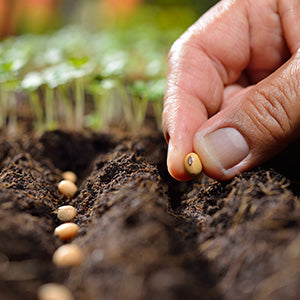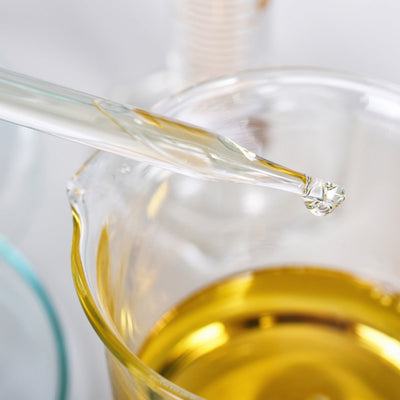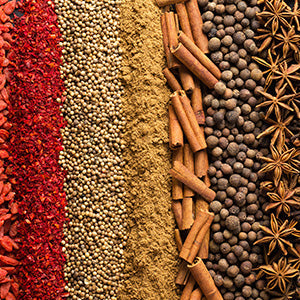15 Foods High in Folic Acid

There are many reasons why it's important to get an adequate amount of folic acid. Perhaps most importantly are cellular growth and regeneration. A 2010 article from the New York Times identified folic acid as one of the most, underappreciated micronutrients,[1] and multiple studies suggest a link between a lack of folic acid and mental conditions such as depression.[2]
Also known as vitamin B9, folic acid helps the body perform many essential functions, including nucleotide biosynthesis in cells, DNA synthesis and repair, red blood cell creation, and prevention of anemia.[3] Folic acid also encourages normal fetal development. In fact, folic acid, calcium, and iron have long been considered the holy trinity of prenatal wellness.[3] A deficiency of the vitamin in pregnant women can have significant negative effects on unborn children's brain development.[3]
Fortunately, many foods are naturally rich sources of folic acid. A well-planned diet should easily keep your system well-supplied with the vitamin.
Folic Acid vs. Folate
While folic acid and folate may be marketed interchangeably, their metabolic effects can be quite different. Folate is the bioavailable, natural form of vitamin B9 found in a variety of plant and animal foods. Folic acid, while readily utilized by the body, is the synthetic form of the vitamin; it's primarily found in supplements and fortified foods. The body is more adept at using folate and regulates healthy levels by discarding excess folate in urine.
Foods with Folate (AKA Folic Acid Although Slightly Different)
1. Dark Leafy Greens
It should come as no surprise that one of the planet's healthiest foods is also one of the highest in folate.[3] Adding more spinach, collard greens, kale, turnip greens and romaine lettuce into your daily diet provides an immediate boost in folic acid. Just one large plate of these delicious leafy greens will fulfill nearly all of your daily folate needs.[4]
| Source | Serving Size | Amount of Folate/Serving | DV % |
|---|---|---|---|
| Spinach | 1 cup | 263 mcg | 65% |
| Collard Greens | 1 cup | 177 mcg | 44% |
| Turnip Greens | 1 cup | 170 mcg | 42% |
| Mustard Greens | 1 cup | 103 mcg | 26% |
| Romaine Lettuce | 1 cup | 76 mcg | 19% |
2. Asparagus
Out of the entire vegetable kingdom, asparagus is one of the most nutrient dense foods with folic acid.[3] Eating just one cup of boiled asparagus provides 262 mcg of folic acid, which provides approximately 65% of your daily needs. Not only is asparagus delicious, but it's also full of nutrients your body craves, including vitamin K, vitamin C, vitamin A, and manganese.[5]
3. Broccoli
Broccoli is one of the best detox foods you can eat, and it's a great source of folic acid. Just one cup of broccoli provides approximately 26% of your daily folic acid needs,[6] not to mention a whole host of other important nutrients. I recommend enjoying organic broccoli raw or lightly steamed.
4. Citrus Fruits
Many fruits contain folic acid, and citrus fruits rank the highest. Oranges are an especially rich source of folic acid. One orange holds about 50 mcg, and a large glass of fresh-squeezed juice may contain even more. Other folate-rich fruits include papaya, grapefruit, grapes, banana, cantaloupe and strawberries. Here is a short list of fruits high in folic acid.[4]
| Source | Serving Size | Amount of Folate/Serving | DV % |
|---|---|---|---|
| Papaya | 1 Papaya | 115 mcg | 29% |
| Oranges | 1 orange | 40 mcg | 10% |
| Grapefruit | 1 Grapefruit | 40 mcg | 8% |
| Strawberries | 1 cup | 40 mcg | 6.5% |
| Raspberries | 1 cup | 14 mcg | 4% |
5. Beans, Peas, and Lentils
Beans and peas that are especially high in folic acid include pinto beans, lima beans, green peas, black-eyed peas and kidney beans. A small bowl of any type of lentils provides most of your daily folate needs.[3] Here is a short list of beans with the most folic acid.[4]
| Source | Serving Size | Amount of Folate/Serving | DV % |
|---|---|---|---|
| Lentils | 1 cup | 358 mcg | 90% |
| Pinto Beans | 1 cup | 294 mcg | 74% |
| Garbanzo Beans | 1 cup | 282 mcg | 71% |
| Black Beans | 1 cup | 256 mcg | 64% |
| Navy Beans | 1 cup | 254 mcg | 64% |
| Kidney Beans | 1 cup | 229 mcg | 57% |
| Lima Beans | 1 cup | 156 mcg | 39% |
| Split Peas | 1 cup | 127 mcg | 32% |
| Green Peas | 1 cup | 101 mcg | 25% |
| Green Beans | 1 cup | 42 mcg | 10% |

6. Avocado
The avocado, also known as the butter pear, holds up to 110 mcg of folate per cup, which accounts for approximately 28% of your daily needs.[7] Not only are avocados one of the best foods with folic acid, but they're an excellent source of fatty acids, vitamin K, and dietary fiber. Adding them to sandwiches or salads makes for an extra-healthy treat.
7. Okra
The world's most slimy vegetable is also one of the most nutrient rich. Okra has the distinct ability to simultaneously offer vitamins and minerals while cleansing the entire digestive tract of toxic build-up. When it comes to folate, okra is a great source. Just a half cup of cooked okra will give you approximately 103 mcg of folic acid.[7]
8. Brussels Sprout
There is no denying that Brussels sprouts are one of the best foods for folic acid.[8] Eating one cup of boiled brussels sprouts will provide approximately 25% of your daily recommended amount. Brussels sprouts are also high in vitamin C, vitamin K, vitamin A, manganese, and potassium.
9. Seeds and Nuts
It doesn't matter if it's pumpkin, sesame, sunflower, or flax seeds, eating them raw, sprouted, or sprinkled onto a salad adds a healthy serving of folic acid. Sunflower seeds and flax seeds are especially high in folate; one cup offers up to 300 mcg.[8] Nuts are also high in folic acid,[9] especially peanuts and almonds.[8] Below is a short list of the best seeds and nuts for folic acid.
| Source | Serving Size | Amount of Folate/Serving | DV % |
|---|---|---|---|
| Sunflower Seeds | ¼ cup | 82 mcg | 21% |
| Peanuts | ¼ cup | 88 mcg | 22% |
| Flax Seeds | 2 tbsp | 54 mcg | 14% |
| Almonds | 1 cup | 54 mcg | 12% |
10. Cauliflower
This cruciferous vegetable is typically regarded as one of the best vitamin C foods, but it's also a great source of folic acid.[8] Just one cup of cauliflower will give you approximately 55 mcg of folate, accounting for 14% of your recommended daily value. I recommend adding fresh cauliflower to a salad.
11. Beets
Beets are a great source of antioxidants, and they also provide detox support, making them one of the best liver cleanse foods on the planet. While that's a great reason to add them to your diet, beets are also known as one of the best sources of folic acid. Eating one cup of beets will provide you with approximately 148 mcg of folate, accounting for 34% of your daily needs.[7]
12. Corn
Corn is a fun and popular vegetable that contains plenty of folate. Just one cup of cooked corn will provide you with approximately 34 mcg of folic acid, accounting for almost 9% of your daily needs. I recommend avoiding canned veggies and opting for fresh and organic.[10]
13. Celery
Celery is commonly regarded as a great food to help with kidney stones, but did you know it's also a great source for folic acid? Just one cup of raw celery provides about 36 mcg of folate, accounting for about 9% of your daily needs.[11]

14. Carrots
Carrots are another extremely popular vegetable you probably have in your home right now. Just one cup of raw carrots will give you almost 5% of your daily recommended needs for folic acid.[12] Eat baby carrots as a snack or add them to your salads for a folate boost!
15. Squash
The nutritional benefits of squash are as vibrant as the vegetable's brilliant colors.[13] And, if you make it right, it's delicious. Whether it's summer squash or winter squash, adding squash to your diet will give you a folic acid boost. Here is a breakdown of how much folate is found in squash.[13, 14]
| Source | Serving Size | Amount of Folate/Serving | DV % |
|---|---|---|---|
| Winter squash | 1 cup | 41 mcg | 21% |
| Summer squash | 1 cup | 33 mcg | 8% |
Folate Supplementation
Many foods contain folate, but if you still find yourself falling short of ideal intake, then supplementation may be a smart step for you. Folate (or folic acid) is available in multi-vitamins. I recommend intraMAX® 2.0, an all-in-one liquid vitamin supplement. intraMAX® 2.0 contains over 415 essential vitamins and minerals, including 200% of your daily recommended intake of folate.
References (14)
- Kristof, Nicholas. "World’s Healthiest Food." The New York Times. The New York Times, 02 Jan. 2010. Web. 07 Mar. 2017.
- Young, Simon N. "Folate and Depression—a Neglected Problem." Journal of Psychiatry & Neuroscience 32.2 (2007): 80–82. Print.
- McNulty, Helene, Barbera Delange, Victoria Drake, and Jane Higdon. "Folate." Journal of Psychiatry & Neuroscience 32.2 (2007): 80–82. Print.
- Meddling, John. "Nutrition in a Nutshell." Healing With Herbs. N.p.: Authorhouse, 2014. Print.
- "Basic Report: 11012, Asparagus, cooked, boiled, drained." National Nutrient Database for Standard Reference Release 28. United States Department of Agriculture, n.d. Web. 07 Mar. 2017.
- "Office of Dietary Supplements - Dietary Supplement Fact Sheet: Folate." National Institutes of Health. U.S. Department of Health and Human Services, n.d. Web. 07 Mar. 2017.
- "Part IV Folic Acid References Resources." (2009): n. pag. Ohio Department of Health. Ohio Department of Health. Web. 7 Mar. 2017.
- "Vitamin B/ Folic Acid." Central District Health Department. Central District Health Department, n.d. Web. 7 Mar. 2017.
- "Folic Acid." University of Massachusetts, Amherst Nutrition Information Bulletin Board & Learning Experience. University of Massachusetts Amherst, n.d. Web. 07 Mar. 2017.
- "Basic Report: 11168, Corn, sweet, yellow, cooked, boiled, drained, without salt." National Nutrient Database for Standard Reference Release 28. United States Department of Agriculture, n.d. Web. 07 Mar. 2017.
- "Basic Report: 11143, Celery, raw." National Nutrient Database for Standard Reference Release 28. United States Department of Agriculture, n.d. Web. 07 Mar. 2017.
- "Basic Report: 11124, Carrots, raw." National Nutrient Database for Standard Reference Release 28. United States Department of Agriculture, n.d. Web. 07 Mar. 2017.
- "Basic Report: 11644, Squash, winter, all varieties, cooked, baked, without salt." National Nutrient Database for Standard Reference Release 28. United States Department of Agriculture, n.d. Web. 07 Mar. 2017.
- "Basic Report: 11641, Squash, summer, all varieties, raw." National Nutrient Database for Standard Reference Release 28. United States Department of Agriculture, n.d. Web. 07 Mar. 2017.
†Results may vary. Information and statements made are for education purposes and are not intended to replace the advice of your doctor. If you have a severe medical condition or health concern, see your physician.

Dr. Edward Group, DC
FOUNDER | HEALER | ADVOCATEDr. Group, DC is a healer and alternative health advocate, and an industry leader and innovator in the field of natural health who is dedicated to helping others. He is a registered doctor of chiropractic (DC), a naturopathic practitioner (NP), and proud alum of Harvard Business School and MIT Sloan School of Management. Dr. Group, DC is the founder of Global Healing – a mission and vision he has shared through best-selling books and frequent media appearances. He aims to spread his message of positivity, hope, and wellness throughout the world.










